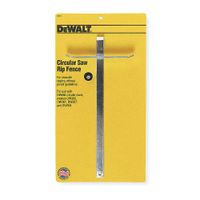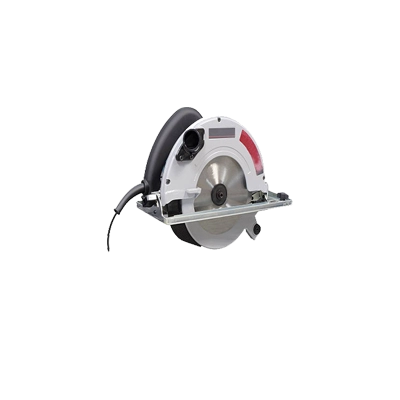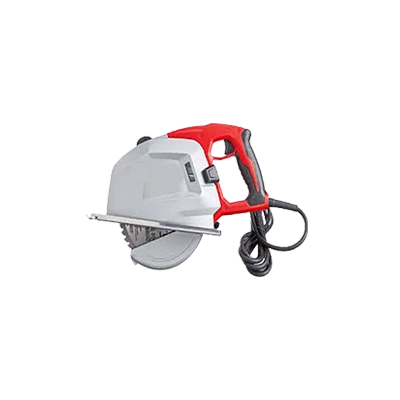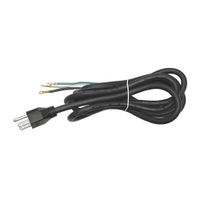Call +(254) 703 030 000 / 751 483 999 / 721 704 777
- Home
- Tools
- Power Tools
- Power Saws Blades
- Circular Saws
.....Read More
Frequently Asked Questions
What is the best circular saw for beginners?
The best circular saw for beginners is the DEWALT DWE575SB 7-1/4-Inch Circular Saw. This model is highly recommended due to its balance of power, safety features, and ease of use, making it ideal for those new to using circular saws.
Key features include:
1. **Lightweight Design**: Weighing only 8.8 pounds, it is one of the lightest saws in its class, reducing user fatigue and making it easier to handle for extended periods.
2. **Powerful Motor**: The 15-amp motor delivers 5,200 RPM, providing ample power for a variety of cutting tasks, from softwoods to harder materials.
3. **Electric Brake**: This safety feature stops the blade quickly after the trigger is released, reducing the risk of accidents and enhancing user safety.
4. **Durability**: The saw features a high-grade aluminum base and a tough cord protection system, ensuring longevity and reliability.
5. **Ease of Use**: The saw includes a clear line of sight and an integrated dust blower, which keeps the cutting line free of debris, allowing for more accurate cuts.
6. **Bevel Capacity**: With a bevel capacity of 57 degrees and positive stops at 22.5 and 45 degrees, it offers versatility for a range of cutting angles.
7. **Safety Features**: The saw comes with a ToughCord system, which provides three times more resistance to cord pullouts, and a patented 15-amp motor designed to prevent overheating.
Overall, the DEWALT DWE575SB combines user-friendly features with robust performance, making it an excellent choice for beginners who need a reliable and safe tool to start their woodworking projects.
How do I choose the right blade for my circular saw?
1. **Material Type**: Identify the material you will be cutting (wood, metal, plastic, etc.). Different materials require different blade types.
2. **Blade Size**: Ensure the blade size matches your saw’s specifications. Common sizes are 7-1/4 inches for handheld saws and 10 or 12 inches for table saws.
3. **Tooth Count**: Choose the tooth count based on the desired finish. Fewer teeth (e.g., 24) are suitable for rough cuts and faster cutting, while more teeth (e.g., 60 or 80) provide smoother finishes.
4. **Tooth Configuration**: Consider the tooth design. Alternate Top Bevel (ATB) is versatile for crosscuts and ripping wood. Flat Top Grind (FTG) is ideal for ripping. Triple Chip Grind (TCG) is best for cutting hard materials like metal or laminate.
5. **Kerf Width**: Decide between thin kerf and full kerf. Thin kerf blades require less power and are suitable for portable saws, while full kerf blades are more durable and used in stationary saws.
6. **Blade Material**: Opt for carbide-tipped blades for durability and longevity. High-Speed Steel (HSS) is cheaper but wears out faster.
7. **Arbor Size**: Match the blade’s arbor hole to your saw’s arbor size to ensure compatibility.
8. **Specialty Blades**: Consider specialty blades for specific tasks, such as dado blades for grooves or non-ferrous blades for cutting aluminum.
9. **Brand and Quality**: Choose reputable brands known for quality and reliability to ensure safety and performance.
10. **Budget**: Balance cost with quality. Investing in a good blade can save money in the long run by reducing the need for frequent replacements.
11. **Safety Features**: Look for blades with anti-kickback features and heat expansion slots for safer operation.
What safety precautions should I take when using a circular saw?
1. **Wear Personal Protective Equipment (PPE):** Use safety goggles, ear protection, and a dust mask. Wear gloves with caution to avoid entanglement.
2. **Inspect the Saw:** Check the blade for sharpness and damage. Ensure the blade is properly installed and secured. Verify that the safety guard is functioning correctly.
3. **Check the Work Area:** Ensure the work area is clean, dry, and well-lit. Remove any obstructions or debris that could cause tripping or interference.
4. **Secure the Material:** Use clamps or a vise to secure the material being cut. This prevents movement and ensures a straight cut.
5. **Use the Right Blade:** Select the appropriate blade for the material you are cutting. Ensure it is compatible with your saw.
6. **Adjust the Blade Depth:** Set the blade depth to just slightly deeper than the thickness of the material to minimize kickback.
7. **Maintain a Stable Stance:** Stand to the side of the cutting line, not directly behind the saw. Keep a balanced stance with feet shoulder-width apart.
8. **Start and Stop Safely:** Allow the saw to reach full speed before beginning the cut. Do not remove the saw from the material until the blade has completely stopped.
9. **Avoid Loose Clothing and Jewelry:** These can get caught in the saw, leading to injury.
10. **Be Aware of Kickback:** Hold the saw firmly with both hands and be prepared for any sudden movements. Do not force the saw through the material.
11. **Disconnect Power When Not in Use:** Unplug the saw when changing blades or making adjustments.
12. **Follow Manufacturer’s Instructions:** Always adhere to the guidelines provided in the user manual for safe operation.
How do I maintain and clean my circular saw?
1. **Unplug the Saw**: Always disconnect the power source before cleaning or maintenance to ensure safety.
2. **Clean the Blade**: Remove the blade using the wrench provided with the saw. Soak it in a solution of warm water and mild detergent or a commercial blade cleaner. Scrub gently with a soft brush to remove resin and pitch. Rinse and dry thoroughly.
3. **Inspect the Blade**: Check for any signs of damage, such as chips or dullness. Replace if necessary.
4. **Clean the Housing and Vents**: Use a soft brush or compressed air to remove dust and debris from the motor housing and air vents. This prevents overheating and ensures efficient operation.
5. **Lubricate Moving Parts**: Apply a light machine oil to the pivot points and any other moving parts to ensure smooth operation. Avoid over-lubricating, as excess oil can attract dust.
6. **Check the Power Cord**: Inspect the power cord for any signs of wear or damage. Replace if necessary to prevent electrical hazards.
7. **Align the Blade**: Ensure the blade is properly aligned with the base plate and the fence. Adjust as needed to maintain accurate cuts.
8. **Check the Guard and Safety Features**: Ensure the blade guard moves freely and returns to its position after being lifted. Test other safety features to ensure they are functioning correctly.
9. **Tighten Screws and Bolts**: Check and tighten any loose screws or bolts to maintain the saw’s structural integrity.
10. **Store Properly**: Store the saw in a dry, clean place to prevent rust and damage. Use a blade cover if available.
Regular maintenance and cleaning will extend the life of your circular saw and ensure it operates safely and efficiently.
What is the difference between a corded and cordless circular saw?
A corded circular saw is powered by electricity through a power cord connected to an outlet. It offers consistent power output, making it suitable for heavy-duty tasks and prolonged use without interruptions. Corded saws typically have higher torque and cutting capacity, which is ideal for cutting through dense materials like hardwood or metal. They are generally lighter than cordless models since they don't carry a battery, and they are often more affordable. However, their mobility is limited by the length of the power cord, and they require access to a power source.
In contrast, a cordless circular saw is powered by a rechargeable battery, offering greater portability and convenience, especially in locations without easy access to electricity. This makes them ideal for quick jobs, remote sites, or areas where maneuverability is crucial. Cordless saws have improved significantly with advancements in battery technology, providing decent power and runtime. However, they may not match the continuous power output of corded models, and their performance can diminish as the battery depletes. They are typically heavier due to the battery and can be more expensive, factoring in the cost of batteries and chargers.
In summary, the choice between corded and cordless circular saws depends on the specific needs of the user. Corded saws are better for heavy, continuous work with access to power, while cordless saws offer flexibility and ease of use for lighter, more mobile tasks.
How do I make accurate cuts with a circular saw?
1. **Choose the Right Blade**: Use a sharp, appropriate blade for the material. A fine-tooth blade is ideal for precise cuts.
2. **Measure and Mark**: Use a tape measure and a straight edge to mark the cut line clearly with a pencil or chalk. Double-check measurements.
3. **Secure the Material**: Clamp the material to a stable work surface to prevent movement during cutting.
4. **Set the Depth**: Adjust the saw blade depth so it extends about 1/4 inch below the material. This minimizes splintering and increases control.
5. **Align the Saw**: Position the saw’s base plate edge along the cut line. Use the guide notch on the saw to align with the mark.
6. **Use a Guide**: For straight cuts, use a straight edge or a guide rail clamped to the material. This helps maintain a straight path.
7. **Check the Saw**: Ensure the saw is in good condition, with a functioning guard and no loose parts.
8. **Start the Saw**: Before contacting the material, start the saw and let it reach full speed.
9. **Make the Cut**: Keep a firm grip on the saw, and push it steadily along the guide. Maintain consistent speed and pressure.
10. **Follow Through**: Complete the cut without stopping midway. Let the blade come to a stop before lifting the saw.
11. **Safety Gear**: Wear safety goggles, ear protection, and a dust mask. Keep hands away from the blade path.
12. **Inspect the Cut**: Check the cut for accuracy and smoothness. Sand any rough edges if necessary.
Can a circular saw cut metal, and if so, what type of blade is needed?
Yes, a circular saw can cut metal, but it requires the appropriate blade and certain precautions. For cutting metal, you should use a blade specifically designed for metal cutting. These blades are typically made from materials like carbide or have a diamond-tipped edge to handle the hardness of metal.
There are two main types of blades suitable for cutting metal with a circular saw:
1. **Carbide-Tipped Blades**: These are ideal for cutting through softer metals like aluminum and copper. They have teeth tipped with carbide, which is a very hard material that can maintain a sharp edge longer than standard steel blades.
2. **Abrasive Blades**: These are used for cutting harder metals like steel and iron. Abrasive blades are made from a composite material that wears away as it cuts through the metal. They are often used for cutting through thicker or tougher metal materials.
When using a circular saw to cut metal, it's important to follow safety precautions. Wear appropriate personal protective equipment, such as safety goggles, gloves, and hearing protection. Ensure the workpiece is securely clamped to prevent movement during cutting. Additionally, be aware of the potential for sparks and hot metal fragments, which can pose a fire hazard.
It's also crucial to operate the saw at the correct speed and feed rate to avoid overheating the blade or the metal, which can lead to poor cuts or damage to the blade. Always consult the saw and blade manufacturer's guidelines for the best results.





